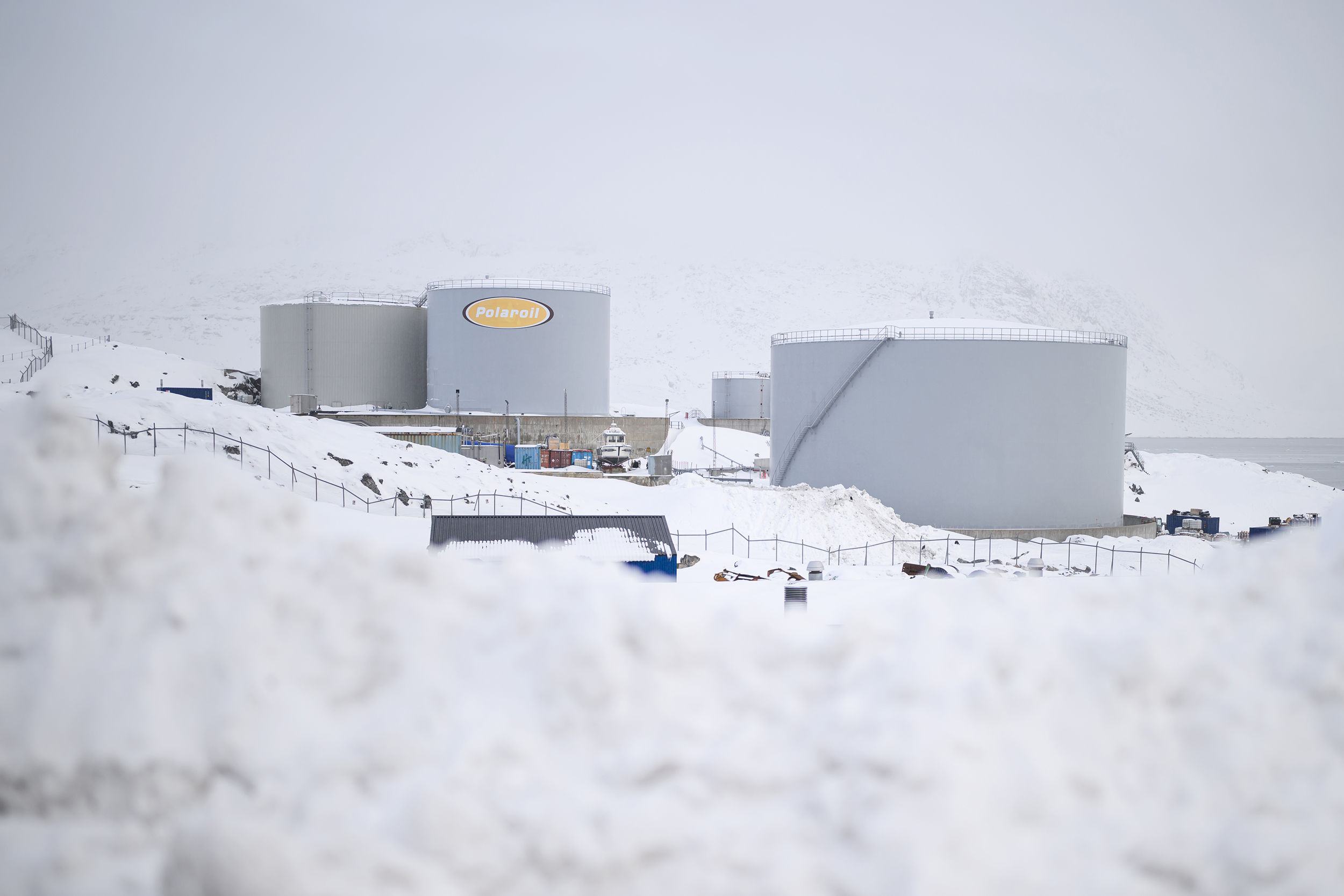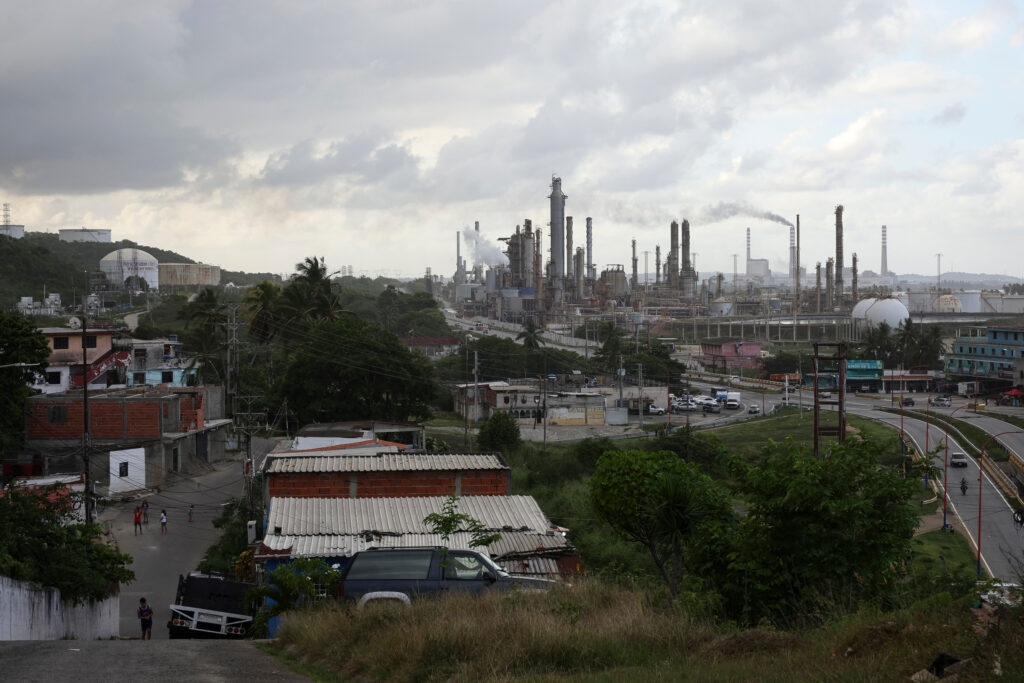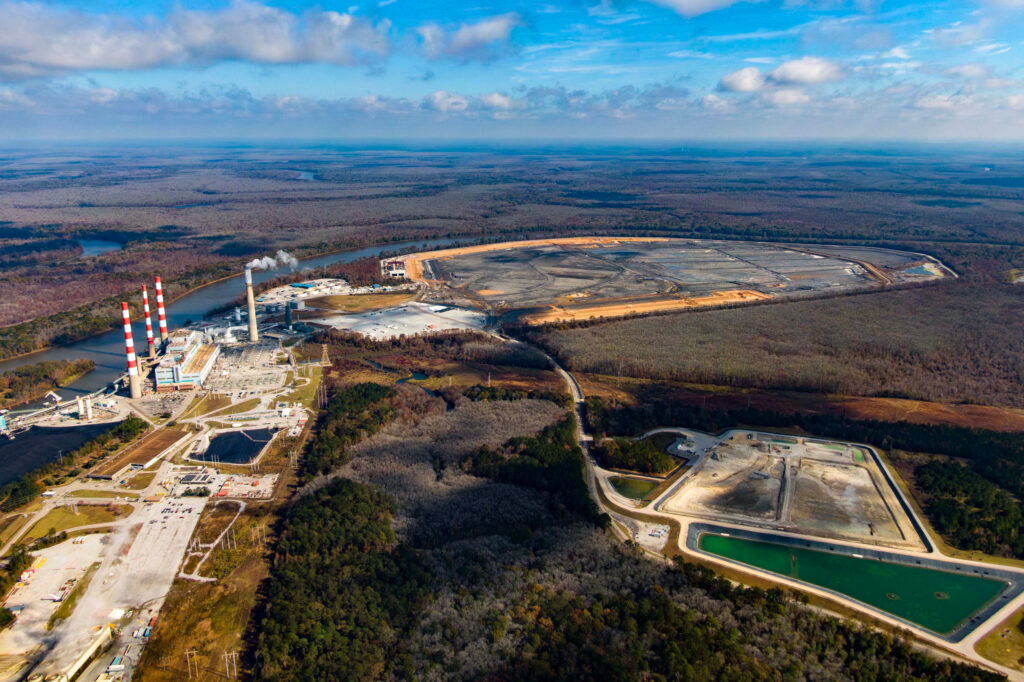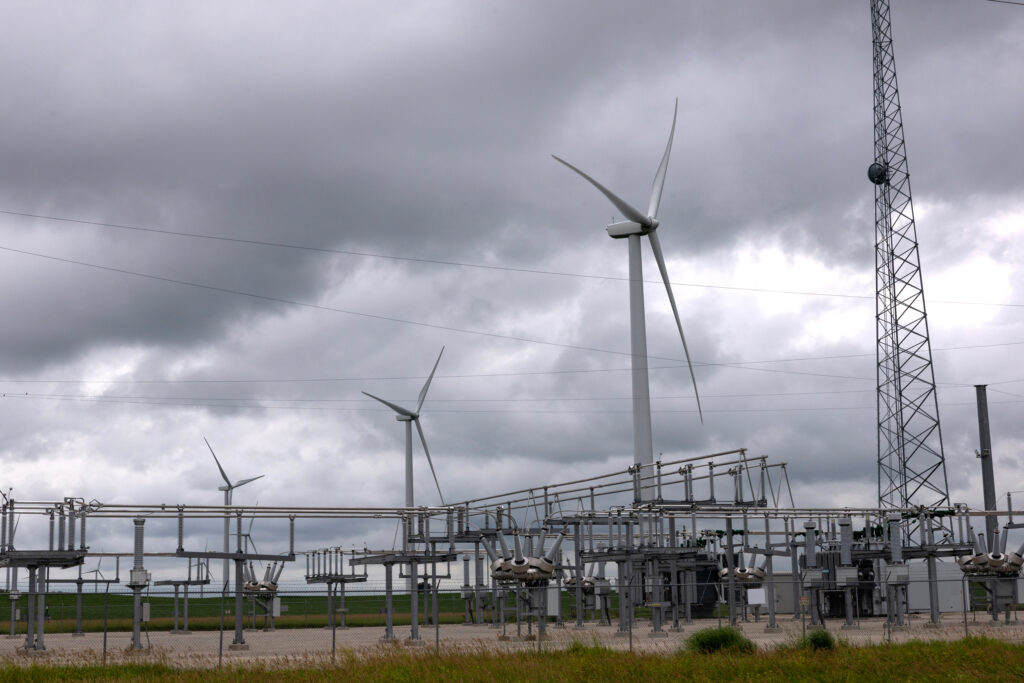In a week when the Trump administration moved forward on multiple fronts to repeal U.S. climate policies, a new analysis quantified the potential costs for public health, households and the economy—including a stunning $1.1 trillion reduction in U.S. gross domestic product by 2035.
The study by the University of Maryland’s Center for Global Sustainability found that any economic benefits to the policy retreat—which Environmental Protection Agency Lee Zeldin placed at $1.2 billion a year from the power plant regulatory rollback alone—would be overwhelmed by the negative effects of greater air pollution and contraction in new manufacturing and jobs associated with an energy transition.
“Overall, there are more GDP losses if we roll back clean energy policies,” said Alicia Zhao, research manager at the center and lead author of the report. “It means even if some of the states are getting gains from the fossil fuel industry, it’s being offset by the losses in clean energy benefits.”
The study came out as the Senate was crafting its version of Trump’s main legislative initiative—the so-called “One Big Beautiful Bill” that will extend and expand tax cuts while slashing government spending, including on incentives for clean energy. Although a group of Republican senators is pushing to keep some of the tax breaks for wind, solar, electric vehicles and battery technology, which overwhelmingly have benefited red states, the depth of their commitment is not clear—especially amid pressure from the president to pass the overall package before July 4.
We’re hiring!
Please take a look at the new openings in our newsroom.
See jobs
Meanwhile, in what Zeldin described as “a historic day at the EPA” on Wednesday, he formally proposed two regulatory repeals that he promised weeks ago: the end of greenhouse gas rules and mercury and air toxics regulations for power plants. In doing so, he stressed alleged economic benefits: $19 billion over the next 20 years in reduced costs to the power plant industry related to the carbon rules, and another $1 billion from jettisoning the mercury and air toxic standard.
But even the EPA’s own figures show a cost-benefit analysis that tips dramatically against the repeals if $130 billion in increased public health costs are considered. These include premature death, heart and lung disease, asthma attacks and increased hospitalizations due to air pollutants like fine particulate matter and ozone.
When asked at a press conference how he could justify the regulatory repeals given the lopsided cost-benefit equation, Zeldin fired back: “How do you justify not doing this action?”
Not addressing the health cost issue, Zeldin asserted repeatedly that President Joe Biden administration’s intended to kill the coal and oil industries with the greenhouse gas rules “to destroy industries that didn’t align with their narrow-minded climate change zealotry.”
Zeldin expressed skepticism of past analyses that showed health benefits of power plant regulations outweighing the costs. He pointed out that when President Barack Obama’s administration originally put mercury and air toxics rules into place in 2012, it estimated the cost to industry would be $9.6 billion. But utilities estimated that they invested $18 billion to bring power plants in compliance with those standards, which the U.S. Supreme Court ultimately struck down.
“Just because they might be throwing out their numbers to justify their rules doesn’t make their numbers accurate,” Zeldin said.

Members of Congress from fossil fuel producing states like West Virginia, North Dakota and Ohio joined Zeldin to praise his repeal of the greenhouse gas and mercury rules. But according to the new University of Maryland study, those states will face some of the worst economic and public health consequences if the Trump administration succeeds in repealing climate regulations at the same time that Congress takes back the clean energy incentives that were passed in the 2022 Inflation Reduction Act.
By 2035, air pollution and associated health damages would be 14 percent higher in West Virginia and 13 percent higher in North Dakota compared to what they would be under current policy, according to the center’s analysis.
Conversely, the center’s results show states that have strong policies in place to limit air pollution and to promote clean energy will be more insulated from the costs of the federal policy repeal. “The level of state ambition does play a role here, and it can help counteract some of the impacts of these federal clean energy policy rollbacks,” Zhao said. The health and economic costs for California, Washington and Oregon are low compared to those in the rest of the country. But Zhao said the team, which hopes to publish its work in a peer-reviewed journal later this year, will have to update the analysis to include recent Congressional action to wipe California’s clean car standards off the books.
Overall, the study estimates ending the Biden-era clean energy policies will result in 22,800 premature deaths of Americans and $160 billion in lost income cumulatively over the next decade. Average home energy costs in 2035 would be $206 higher than they would have been under climate-friendly policy, the Maryland analysts estimated.
The EPA analysis supporting the power plant regulatory repeal has different numbers, although they are not much better for consumers. In 2035, it estimates that retail electricity prices will be 1 percent lower than they are today. Coal production for power sector use would increase 21 percent by 2035, EPA projected. And coal production would soar 84 percent by 2045—a year when scientists say carbon emissions need to be near net zero to avoid the worst impacts of climate change.
The EPA did not estimate the costs of those climate impacts.
About This Story
Perhaps you noticed: This story, like all the news we publish, is free to read. That’s because Inside Climate News is a 501c3 nonprofit organization. We do not charge a subscription fee, lock our news behind a paywall, or clutter our website with ads. We make our news on climate and the environment freely available to you and anyone who wants it.
That’s not all. We also share our news for free with scores of other media organizations around the country. Many of them can’t afford to do environmental journalism of their own. We’ve built bureaus from coast to coast to report local stories, collaborate with local newsrooms and co-publish articles so that this vital work is shared as widely as possible.
Two of us launched ICN in 2007. Six years later we earned a Pulitzer Prize for National Reporting, and now we run the oldest and largest dedicated climate newsroom in the nation. We tell the story in all its complexity. We hold polluters accountable. We expose environmental injustice. We debunk misinformation. We scrutinize solutions and inspire action.
Donations from readers like you fund every aspect of what we do. If you don’t already, will you support our ongoing work, our reporting on the biggest crisis facing our planet, and help us reach even more readers in more places?
Please take a moment to make a tax-deductible donation. Every one of them makes a difference.
Thank you,

















